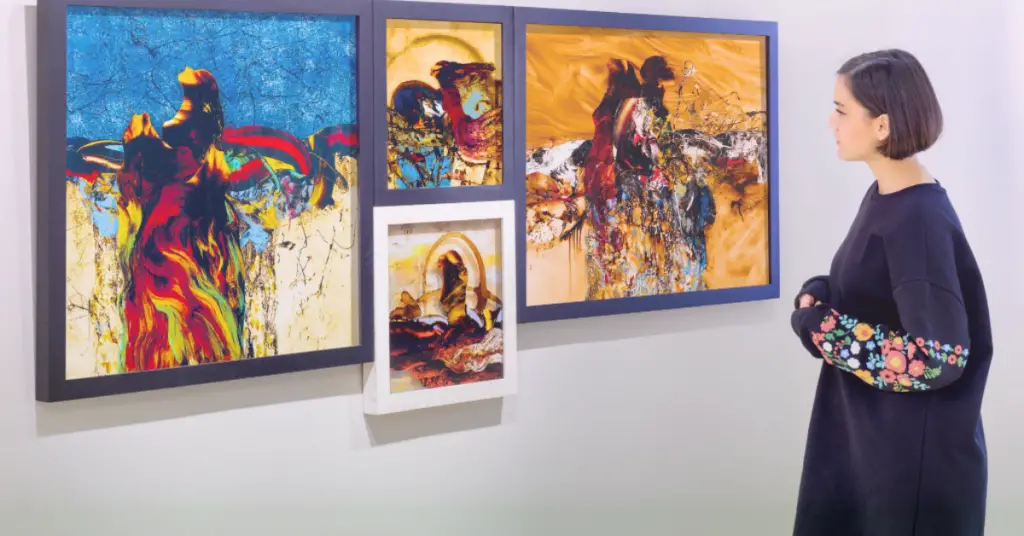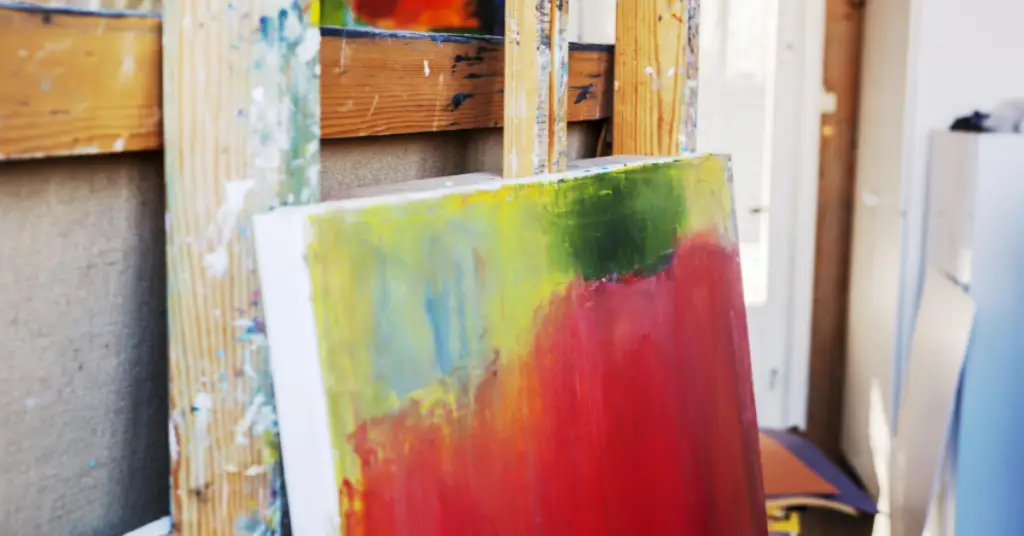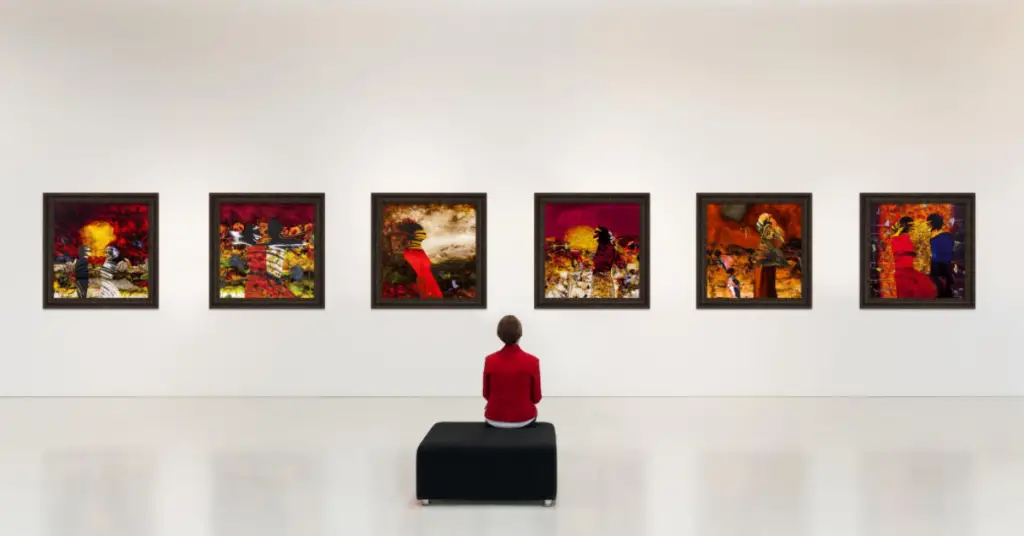Art Exhibition

Are you ready to be transported to a world of wonder and creativity? Do you want to experience the beauty and power of art in a whole new way?
Then get ready because we’ll take you through art exhibitions!
In this article, we will explore what makes an art exhibition unforgettable. From understanding exhibitions, types of gallery exhibitions, the artist’s role, contemporary exhibitions, and staging.
We will dive into the elements that come together to create a truly unforgettable art exhibition.
Whether you’re an art lover or simply curious about the art world, this article is for you. So sit back, relax, and get ready to be inspired!
Key Takeaways:
- Art exhibitions provide a unique opportunity to see some of the most exciting and innovative works of art from around the world.
- There are many different types of exhibitions, from solo shows to group exhibitions, each with a unique focus and purpose.
- Regardless of the type of exhibition, they all provide a chance to see art in a new and exciting way.
Understanding Art Exhibitions

Art exhibitions are public events where artists display their work, and a wider audience can learn about a particular art form. An art exhibition is traditionally where art objects meet an audience.
The exhibit is universally understood to be for some temporary period unless, as is occasionally true, it is stated to be a “permanent exhibition” [1].
Galleries, museums, art fairs, or artists can organize art exhibitions. They can be commercial, juried, or non-commercial, featuring works by one artist or several artists from different countries.
Some exhibitions may be curated around a particular theme or concept, while others may be more open-ended.
Art exhibitions serve several purposes. They provide artists with a platform to showcase their work and gain recognition.
They also offer a space for audiences to engage with art and learn about different art forms.
Art exhibitions can also be educational, as they often include catalogs that contain descriptions and essays about the artwork that have been analyzed and penned down by prominent scholars in art [3].
For artists, participating in an art exhibition can be a valuable experience. It can help them establish their reputation, gain exposure, and sell artwork.
Exhibitions can also provide artists with feedback on their work and help them improve their skills.
For audiences, art exhibitions can be a unique and enriching experience. They offer a chance to see new and exciting art forms, learn about different cultures, and engage with art meaningfully.
They can also be a social experience, as visitors can discuss the artwork with other attendees and attend special events like artist talks or workshops.
In summary, art exhibitions are an essential part of the art world. They provide artists with a platform to showcase their work and audiences with an opportunity to engage with art and learn about different art forms.
Whether you are an artist or an art enthusiast, attending an art exhibition can be a valuable and enriching experience.
Types of Gallery Exhibition

When it comes to art exhibitions, there are several types to consider. Each type has its unique characteristics and purposes.
In this section, we will explore two common types of art exhibitions: Installation Exhibitions and Special Event Exhibitions.
Installation Exhibitions
Installation exhibitions are a type of exhibition that involves the creation of a site-specific artwork or a series of paintings that are created to be displayed within a specific space.
The artworks are often large-scale and may involve the use of a variety of materials and techniques. An installation exhibition aims to create an immersive and interactive experience for the viewer.
One example of an installation exhibition is Yayoi Kusama’s “Infinity Mirrors” exhibition. This exhibition featured a series of mirrored rooms that created an illusion of infinite space.
The viewer could walk through the rooms and experience the artwork from different perspectives.
Special Event Exhibitions
Special event exhibitions are created to coincide with a particular event or occasion. These exhibitions may be temporary or permanent and may involve displaying an individual artist’s work or a specific theme.
One example of a special event exhibition is the “Art Basel” exhibition. This exhibition is held annually in Basel, Switzerland, and features the work of contemporary artists worldwide.
The exhibition coincides with the Basel Art Fair, one of the world’s largest art fairs.
Whether planning an exhibition or attending one, it is important to understand the different types of exhibitions available.
Doing so lets you better appreciate every kind of exhibition’s unique characteristics and purposes and better understand the art world.
The Role of the Artist

Artists play a crucial role in art exhibitions. They are the ones who create the artwork that is showcased in the collection.
Artists communicate their ideas, emotions, and perspectives to the audience through their creations.
Art exhibitions provide a platform for artists to showcase their work and express themselves to a broader audience.
As an artist, your role in an art exhibition is to create engaging, thought-provoking, and visually appealing artwork.
You must create artwork that will capture the audience’s attention and effectively communicate your ideas. Your artwork should be able to stand on its own and convey a message to the viewer.
In addition to creating artwork, artists are responsible for engaging with the audience. You need to be able to talk about your artwork and explain your creative process to the audience.
This can help the audience understand your artwork better and appreciate it more.
Artists also have a responsibility to the art community. You need to be aware of the current trends and developments in the art world.
This can help you create relevant and meaningful artwork for the audience. It would be best if you also were willing to collaborate with other artists and participate in group exhibitions.
Overall, the artist’s role in an art exhibition is to create artwork that communicates ideas and engages the audience.
It is a responsibility that requires creativity, skill, and dedication. As an artist, you must be willing to take risks and push the boundaries of your imagination to create genuinely memorable artwork.
Contemporary Art in Exhibitions

Contemporary art exhibitions are a great way to explore the latest trends in the art world.
Whether you are a seasoned art collector or interested in discovering new artists, contemporary art exhibitions offer diverse works that reflect the current cultural climate.
Contemporary Art Paintings
Contemporary art paintings are characterized by their innovative use of materials, techniques, and subject matter.
These paintings often challenge traditional notions of art and blur the boundaries between different art forms.
Contemporary art paintings encompass various styles and genres, from abstract expressionism to photorealism.
When visiting a contemporary art exhibition, take the time to appreciate the unique qualities of each painting.
Look for the artist’s use of color, texture, and composition to convey their message. Research the artist’s background and artistic influences to understand their work better.
Modern Art Exhibitions
Modern art exhibitions typically showcase works from the late 19th century to the mid-20th century.
These exhibitions offer a glimpse into the artistic movements that shaped the contemporary art world, such as cubism, surrealism, and abstract expressionism.
When attending a modern art exhibition, pay attention to how artists experimented with form and color to create new modes of expression.
Consider the historical context in which these works were created, as many modern artists responded to their time’s social and political upheavals.
Whether interested in contemporary or modern art, attending exhibitions is a great way to gain a deeper appreciation for the artistic process.
So why explore the latest exhibitions in your area and discover the next big thing in the art world?
Staging an Art Exhibition

Staging an art exhibition requires careful planning and attention to detail. Whether you are a seasoned artist or exhibiting your work for the first time, you should follow several key steps to ensure a successful exhibition.
Step 1: Choose a Venue
Selecting the right venue is crucial to the success of your exhibition. Consider the size of the space, the lighting, and the overall atmosphere.
You want to choose a venue that will showcase your work in the best possible way. Some popular options for art exhibitions include galleries, museums, and alternative spaces such as warehouses or outdoor areas.
Step 2: Plan Your Layout
Once you have chosen your venue, it’s time to plan your layout. Consider the flow of the space and how visitors will move through it.
You want to create a cohesive experience that showcases your work in the best possible way. Some tips for planning your layout include:
- Grouping similar pieces together
- Creating focal points with larger pieces or installations
- Using lighting to highlight specific pieces or areas
- Leaving plenty of space between pieces to allow visitors to appreciate each one individually
Step 3: Hang Your Artwork
Hanging your artwork is a crucial step in the exhibition process. It’s essential to take the time to turn each piece properly to ensure it is showcased in the best possible way.
Some tips for turning your artwork include:
- Using appropriate hardware for each piece
- Ensuring each piece is level and straight
- Leaving enough space between pieces to allow visitors to appreciate each one individually
- Using a laser level to ensure a consistent height across all pieces
Step 4: Promote Your Exhibition
Promoting your exhibition is key to getting people through the door. Use social media, email newsletters, and other marketing channels to spread the word about your exhibition.
Some tips for promoting your exhibition include:
- Creating a press release to send to local media outlets
- Using hashtags on social media to increase visibility
- Partnering with other artists or organizations to cross-promote your exhibition
- Offering a special preview or opening night event to generate buzz
Staging an art exhibition takes time, effort, and attention to detail. Still, with the right planning and execution, it can be a rewarding experience that showcases your work in the best possible way.
Art Collection and Viewing

When viewing art, visiting a collection is a great way to see various works in one place. A collection is a group of artworks a collector or institution has gathered.
Collections can be private or public, ranging from a few pieces to thousands. Museums, galleries, and other art institutions often have collections open to the public for viewing.
When viewing art in a collection, taking your time and looking at each piece is essential. Try to understand the artist’s intent and message and appreciate the work for its beauty and technical skill.
Many collections have information about the artists and the works on display, so take advantage of this to enhance your understanding and appreciation.
Galleries are another great place to view art. Unlike collections, galleries usually showcase the work of a single artist or group of artists.
This can provide a more focused viewing experience and allow you to delve into the artist’s style and techniques.
Galleries are often run by the artists themselves or by curators who are passionate about promoting the work of emerging artists.
Whether visiting a collection or a gallery, respecting the artwork and the space is essential. Follow any posted rules and guidelines, and avoid touching the works unless explicitly allowed.
If you have questions or want to learn more about a particular piece, please ask the staff or docents for more information.
In conclusion, viewing art in a collection or gallery is a beautiful way to appreciate the beauty and skill of artists worldwide. Take your time, be respectful, and enjoy the experience.
Final Thoughts on Art Exhibition
As we end our journey through the world of art exhibitions, we are left with a deep appreciation for the power of art to move, inspire, and transform us.
We have explored the elements that come together to create an unforgettable art exhibition, from the selection of artwork to the lighting and atmosphere.
But above all, we have seen how art can bring people together, spark conversation, and challenge our perceptions of the world.
So, the next time you attend an art exhibition, take a moment to appreciate the beauty and meaning behind each piece of artwork. And remember, art can change the world, one exhibition at a time.



Leave a Reply